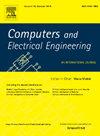Advancements in medical image segmentation: A review of transformer models
IF 4
3区 计算机科学
Q1 COMPUTER SCIENCE, HARDWARE & ARCHITECTURE
引用次数: 0
Abstract
Medical image segmentation is crucial for precise diagnosis, treatment planning, and disease monitoring in healthcare. Traditional methods often struggle with the complexity and variability inherent in medical images. However, recent advancements in deep learning, particularly Transformer models, have revolutionized the field. This comprehensive review explores the transformative impact of Transformer models on medical image segmentation. Beginning with an overview of the limitations of traditional approaches, the review introduces foundational Transformer architectures such as the Vision Transformer, Swin Transformer, and Pyramid Vision Transformer. Systematically categorizing Transformer-based segmentation techniques, it delves into their applications across diverse medical imaging tasks, including brain tumor segmentation, polyp detection, cardiac segmentation, and more. Additionally, the review examines the challenges and considerations in benchmarking Transformer models using evaluation metrics and benchmark datasets. By analyzing current research trends and insights, this review provides valuable guidance for researchers and practitioners seeking to harness the power of Transformer models in medical image segmentation.
求助全文
约1分钟内获得全文
求助全文
来源期刊

Computers & Electrical Engineering
工程技术-工程:电子与电气
CiteScore
9.20
自引率
7.00%
发文量
661
审稿时长
47 days
期刊介绍:
The impact of computers has nowhere been more revolutionary than in electrical engineering. The design, analysis, and operation of electrical and electronic systems are now dominated by computers, a transformation that has been motivated by the natural ease of interface between computers and electrical systems, and the promise of spectacular improvements in speed and efficiency.
Published since 1973, Computers & Electrical Engineering provides rapid publication of topical research into the integration of computer technology and computational techniques with electrical and electronic systems. The journal publishes papers featuring novel implementations of computers and computational techniques in areas like signal and image processing, high-performance computing, parallel processing, and communications. Special attention will be paid to papers describing innovative architectures, algorithms, and software tools.
 求助内容:
求助内容: 应助结果提醒方式:
应助结果提醒方式:


